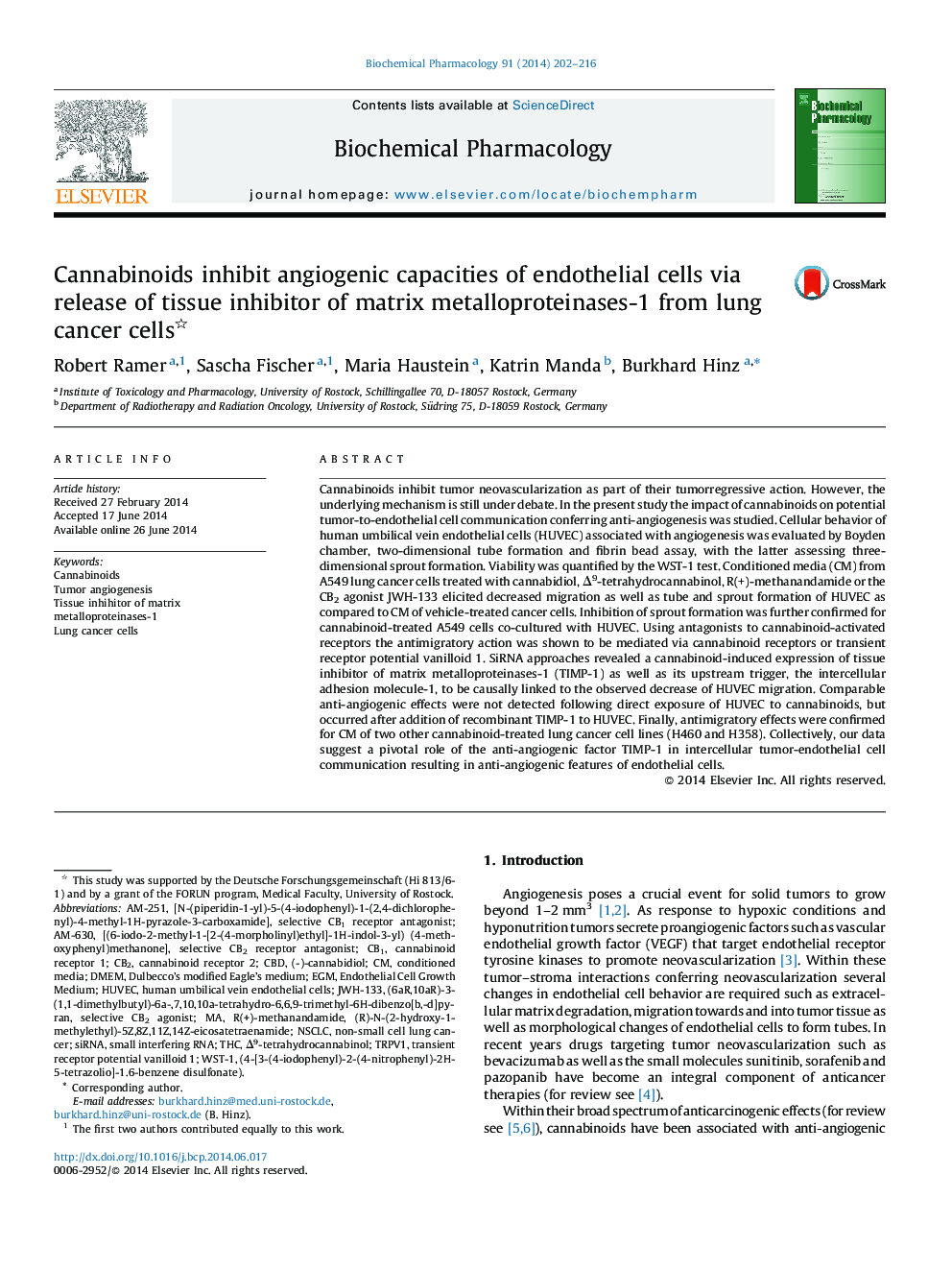| کد مقاله | کد نشریه | سال انتشار | مقاله انگلیسی | نسخه تمام متن |
|---|---|---|---|---|
| 5823347 | 1118318 | 2014 | 15 صفحه PDF | دانلود رایگان |

Cannabinoids inhibit tumor neovascularization as part of their tumorregressive action. However, the underlying mechanism is still under debate. In the present study the impact of cannabinoids on potential tumor-to-endothelial cell communication conferring anti-angiogenesis was studied. Cellular behavior of human umbilical vein endothelial cells (HUVEC) associated with angiogenesis was evaluated by Boyden chamber, two-dimensional tube formation and fibrin bead assay, with the latter assessing three-dimensional sprout formation. Viability was quantified by the WST-1 test. Conditioned media (CM) from A549 lung cancer cells treated with cannabidiol, Î9-tetrahydrocannabinol, R(+)-methanandamide or the CB2 agonist JWH-133 elicited decreased migration as well as tube and sprout formation of HUVEC as compared to CM of vehicle-treated cancer cells. Inhibition of sprout formation was further confirmed for cannabinoid-treated A549 cells co-cultured with HUVEC. Using antagonists to cannabinoid-activated receptors the antimigratory action was shown to be mediated via cannabinoid receptors or transient receptor potential vanilloid 1. SiRNA approaches revealed a cannabinoid-induced expression of tissue inhibitor of matrix metalloproteinases-1 (TIMP-1) as well as its upstream trigger, the intercellular adhesion molecule-1, to be causally linked to the observed decrease of HUVEC migration. Comparable anti-angiogenic effects were not detected following direct exposure of HUVEC to cannabinoids, but occurred after addition of recombinant TIMP-1 to HUVEC. Finally, antimigratory effects were confirmed for CM of two other cannabinoid-treated lung cancer cell lines (H460 and H358). Collectively, our data suggest a pivotal role of the anti-angiogenic factor TIMP-1 in intercellular tumor-endothelial cell communication resulting in anti-angiogenic features of endothelial cells.
Journal: Biochemical Pharmacology - Volume 91, Issue 2, 15 September 2014, Pages 202-216